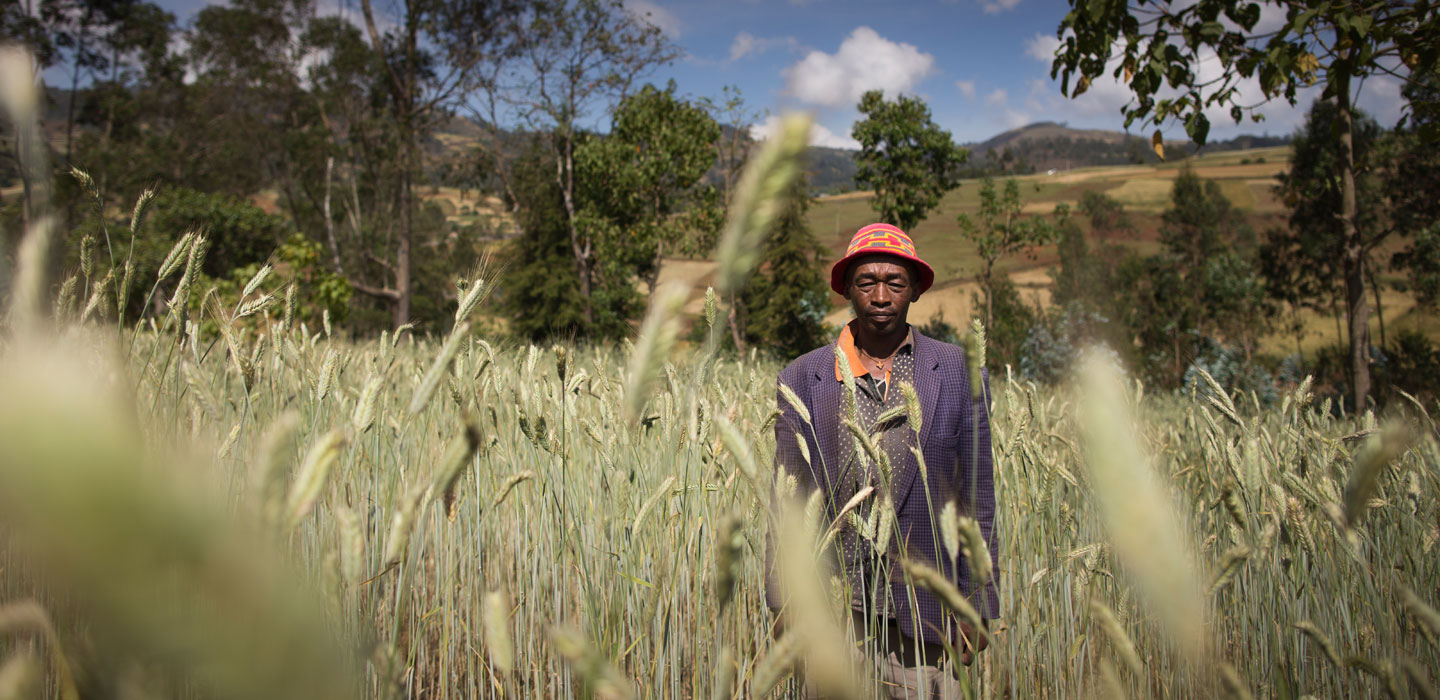Breaking the vicious circle of hunger and conflict
IFAD Asset Request Portlet
Asset Publisher

Hunger is both a cause and result of conflict. Today, around 20 million people are facing famine in Yemen, South Sudan, Burkina Faso and north-eastern Nigeria. In fact, conflict is the main driver of hunger in most of the world’s food crises.
Conflict breeds hunger. It can displace farmers and destroy agricultural assets and food stocks. Or it can disrupt markets, driving up prices and damaging livelihoods. In this vicious circle, conflict and lack of food break down the very fabric of society, and all too often lead to violence.
In 2018, the United Nations Security Council passed an historic resolution recognizing that hunger drives forced displacement and conversely forced displacement can have a devastating impact on agricultural production. Hunger will never be eliminated without global peace. Climate change further deepens the spiral of hunger and conflict. Earlier this month, U.N. Secretary-General António Guterres pointed out that of the 15 countries most susceptible to climate risks, eight host a U.N. peacekeeping operation or special political mission. Conflict over resources like water and arable land will only deepen if resources become scarcer.
From vicious circle to virtuous cycle
With the U.N. Food Systems Summit later this year, there has never been a better time to examine how food systems — the way food is produced, processed, transported, sold and consumed — can drive peace, and how peace can help support strong food systems.
It’s obvious that there is a problem with our food systems: While we produce more food than ever before, one in nine people still go hungry and 2 billion people don’t get enough nutritious food. The carbon footprint of food production is significant. So is the pressure agriculture puts on water resources: agriculture accounts for 70% of water withdrawals. And agriculture is the main driver of biodiversity loss. At the same time, 30% of produced food is wasted or lost after harvest, before it even reaches the consumer.
It doesn’t need to be this way. We need to turn this vicious circle into a virtuous cycle so that food systems can promote peace, which in turn promotes the supply of safe and nutritious food.
Small farms are key
Small-scale farming is key to food systems that contribute to peaceful and healthy communities. More than 2 billion people depend on the world’s 500 million small farms for their livelihoods. They have great potential to contribute more to well-functioning, sustainable food systems.
Why? Because small-scale farms mainly serve domestic and local markets. They are especially important in developing countries where hunger is more likely to provoke unrest.
Moreover, where small-scale farming dominates, there is more civic and social engagement, trust, and attachment to local cultures and communities. Equally important, small farms and other rural small and medium-sized enterprises invest and spend in local economies, create jobs and opportunities — and therefore reduce the need to migrate. Where small farms thrive, resilient and peaceful communities develop.
Finally, smallholder farmers tend to take better care of the natural environment. Sustainable practices — such as organic agriculture — rely upon intricate knowledge of land and ecosystems, and benefit from the long history of working the land enjoyed by family farms.
Small-scale farming systems are responsible for more than half the calories produced globally, yet ironically these farmers often struggle to feed their own families. Their land rights are often infringed, market prices and regulations frequently undermine their incomes, and they are disproportionately affected by climate change.
Investing for food and peace
In countries and situations where conflict threatens food security, short-term actions to respond to crises are not enough. Long-term development investment is key to breaking the vicious circle of hunger and conflict. In Western Sudan, for example, rehabilitating, constructing and managing water points has reduced water-based tensions between nomadic pastoralists. In Colombia, access to finance and training increased production and rural job opportunities, deterring young people from joining conflicts.
In a remote area in Northern Pakistan, access to more resistant varieties of crops, veterinary services for livestock and paved roads to access markets resulted in communities rejecting extremist influences. From these and other examples of the impact of IFAD’s investments, it is also clear that lasting impact depends on holistically addressing the interlinkages between economic factors, natural resource management, and social inclusion.
Guaranteeing the sustainable food systems of tomorrow
Today, COVID-19 is adding to the strains on our food systems, disrupting markets and supply chains for small-scale farmers around the world, threatening peace and stability. We need these small-scale farmers now more than ever, but they also need support and investment so they can play their crucial role.
Food systems are complex. Small-scale farmers need inputs such as seeds and fertilizer to ensure production, and the training and support to overcome shocks such as unpredictable weather, economic downturns, or health crises. It is also critical to ensure that the markets where their products are bought and sold keep running, and to support the crucial role of women in food systems by addressing gender inequalities which impede their income-generating activities.
But there are also a host of social dimensions. The success of small-scale farmers also depends on giving a voice to their representatives — organizations of farmers, indigenous peoples, women, water users and other community-level institutions.
At this challenging time, we must not forget how important the world’s 500 million small-scale farms are for building global peace and food security. The Food Systems Summit will be an opportunity to lay the foundations for the sustainable food systems of the future —and the peace and prosperity of future generations depend upon it.
This article was originally published by Devex.
Publication date: 18 February 2021